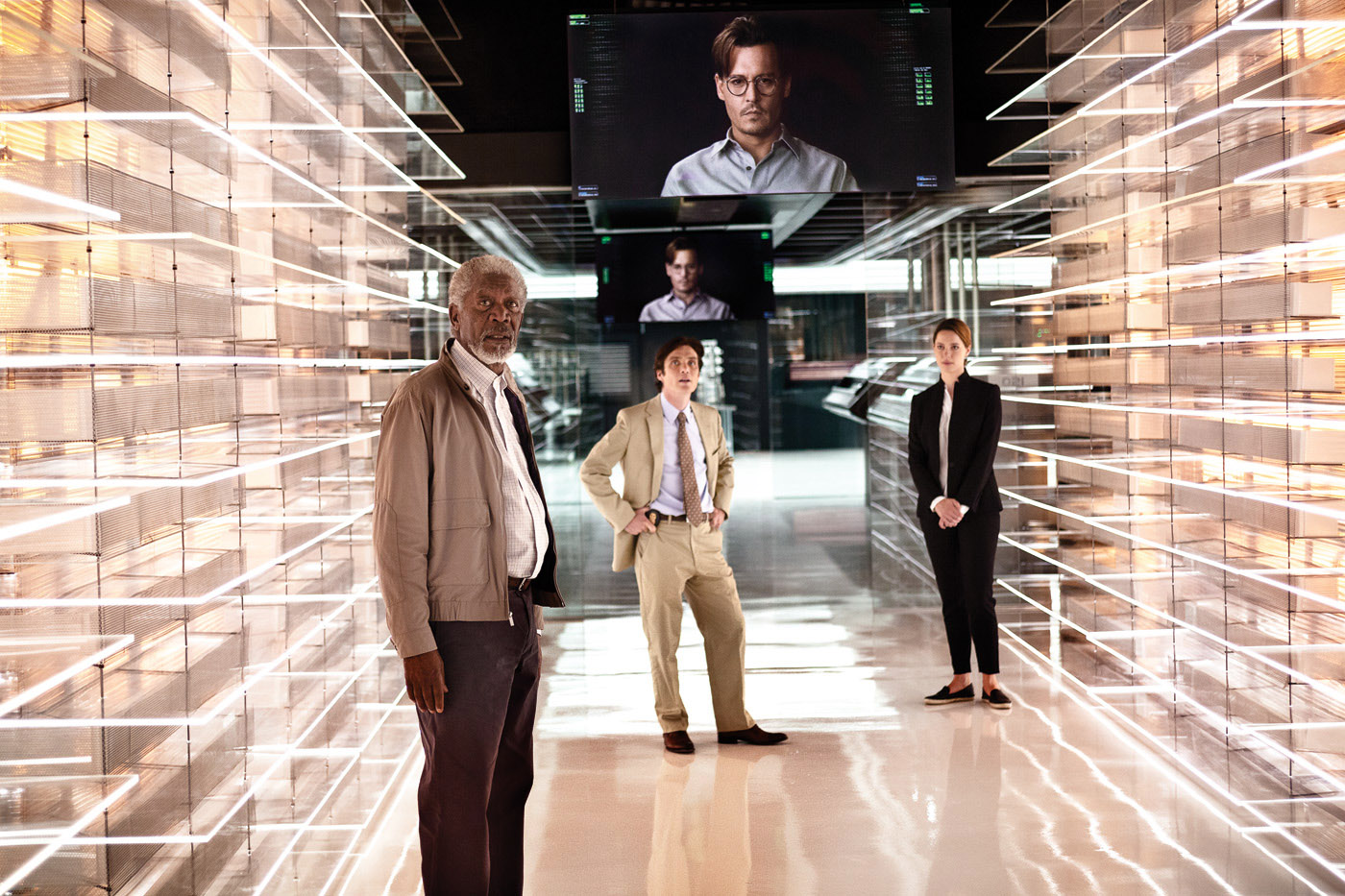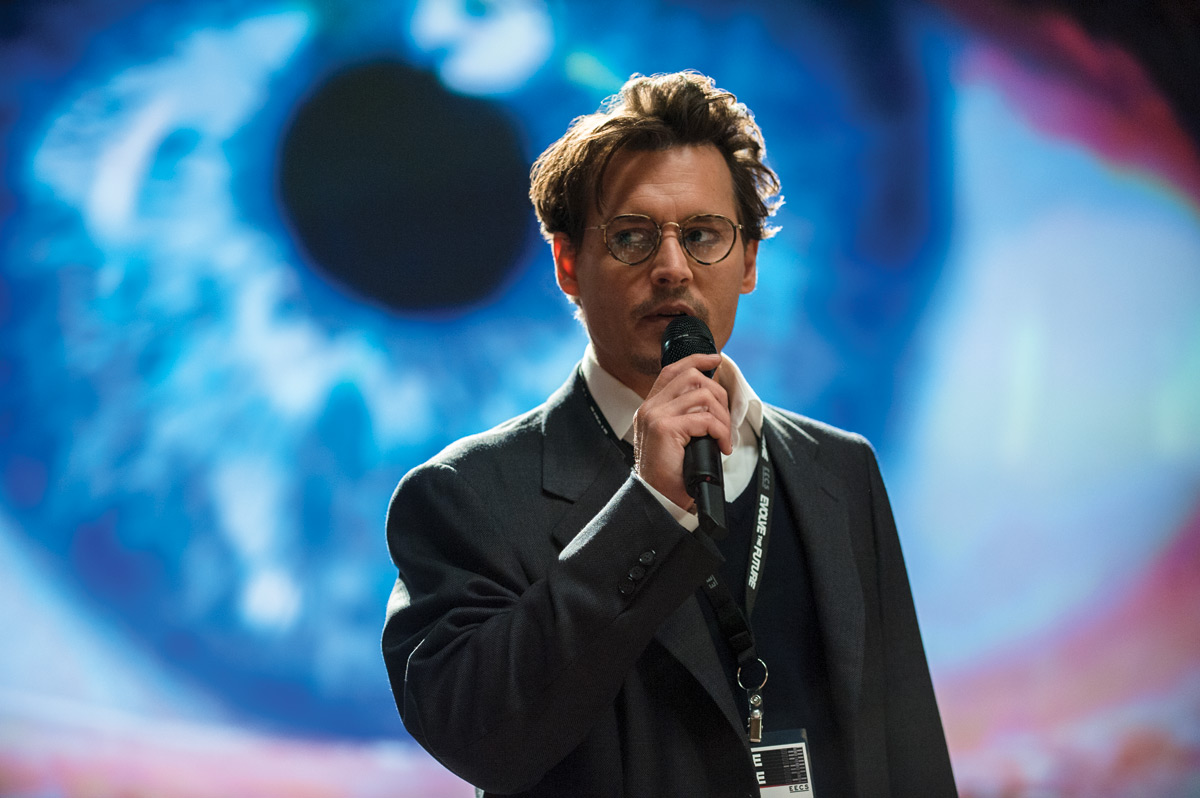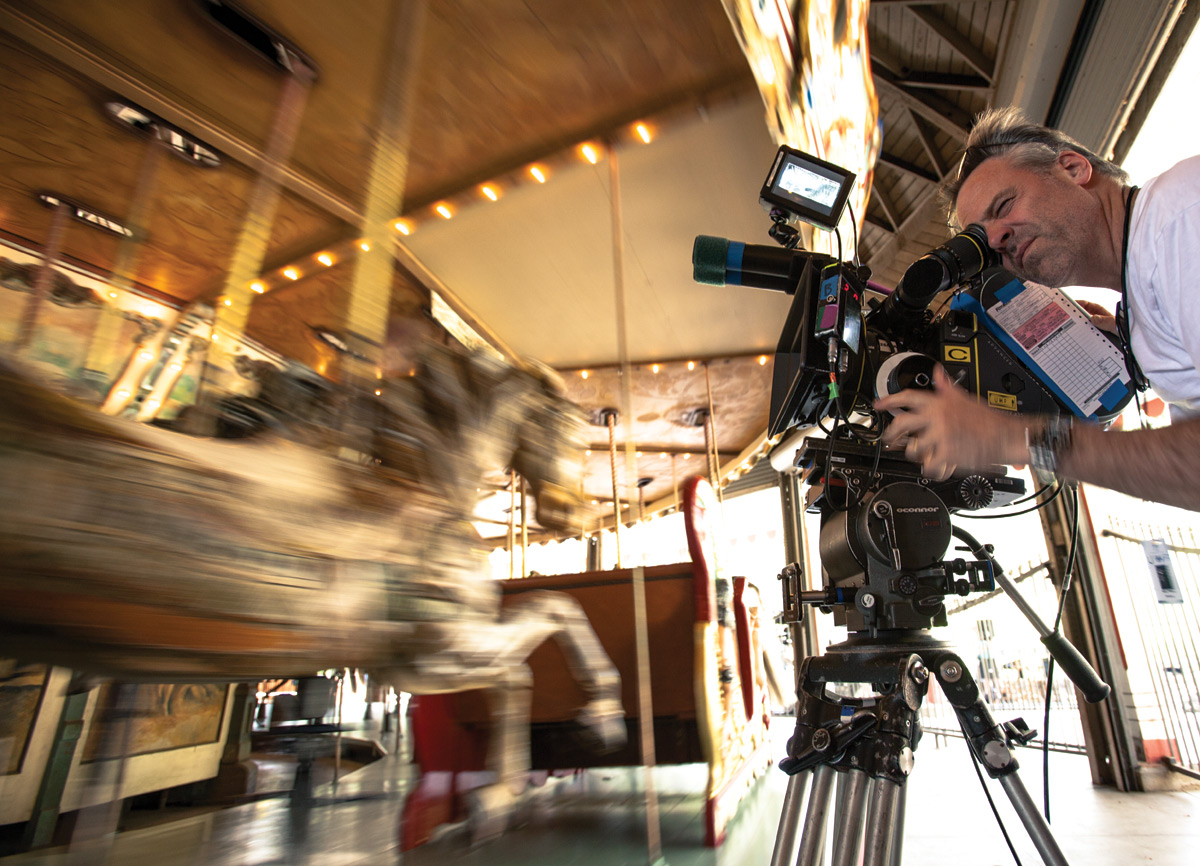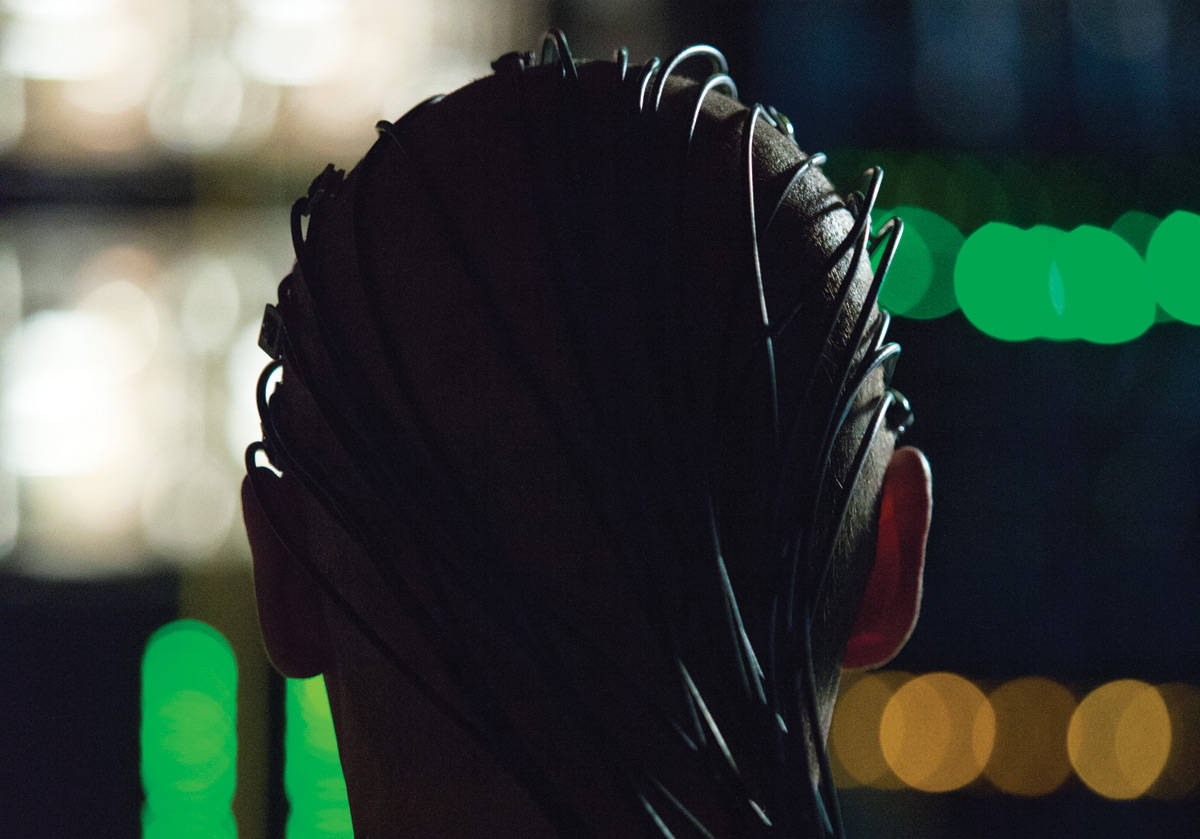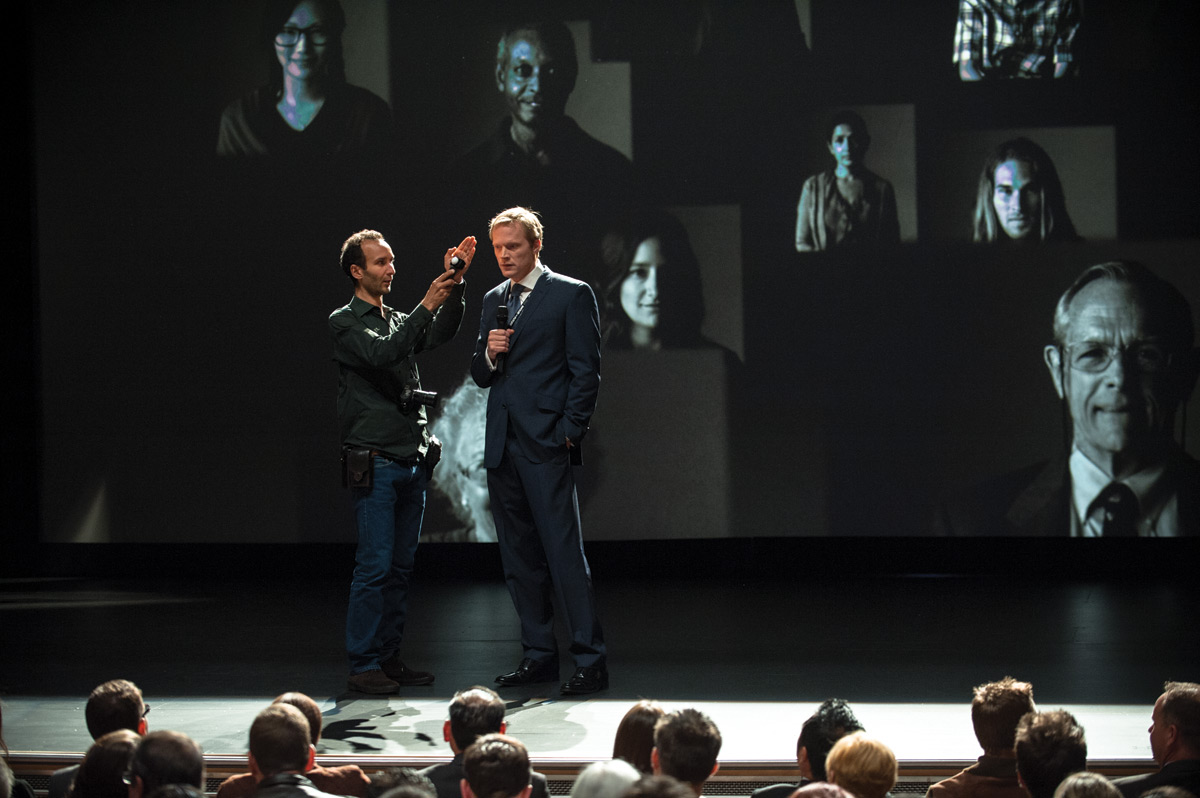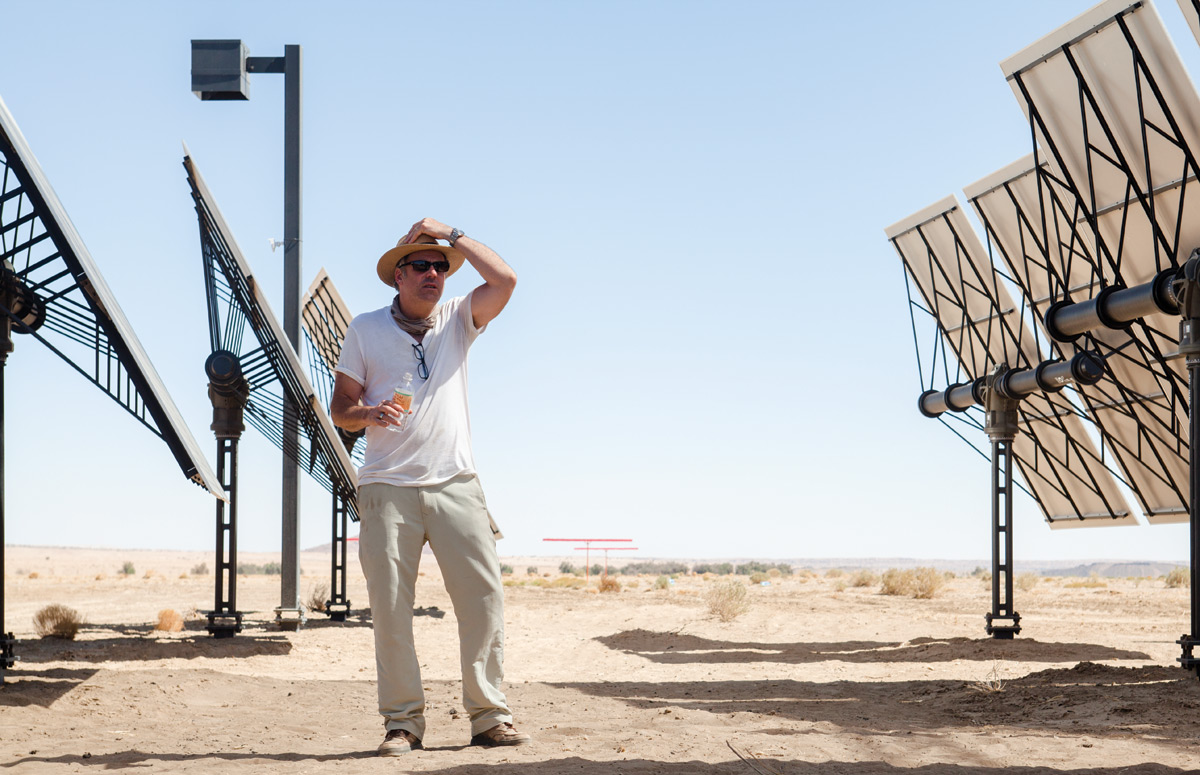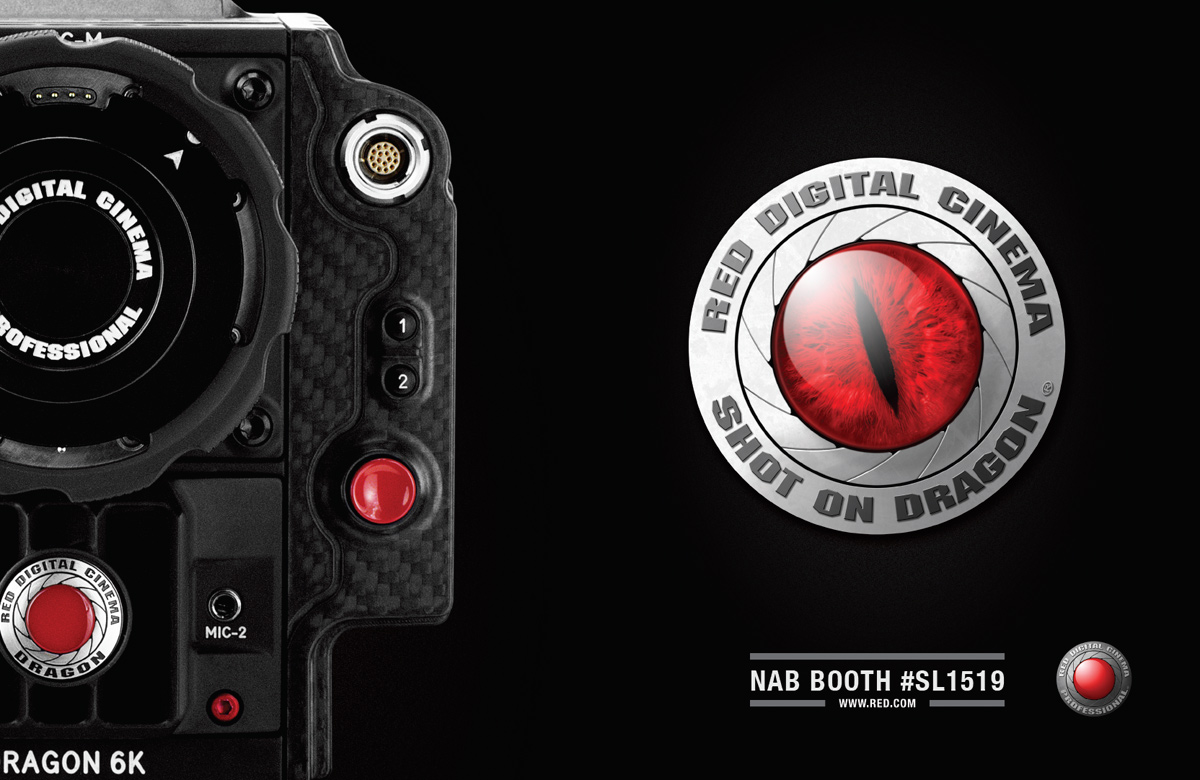Wally Pfister is tight-lipped when it comes to revealing the narrative beats of his directing debut, Transcendence
“Just to give you a little nugget,” he offers, “the film asks questions about technology, showing the ambiguities in how it is perceived, varying from malevolence to benevolence. It’s like what you go through every day with your iPhone. You think, ‘How cool, I can see somebody’s face on this,’ and then it crashes! The technology itself isn’t what makes a thing good or bad − that aspect comes from the humans using the technology, which is what movie-going audiences can best relate to.”
In Transcendence, Johnny Depp plays Will Caster, an artificial intelligence pioneer targeted by anti-technology terrorists. Suffering from a terminal wound, Caster has his consciousness transferred into a computer, where his cyber-self rapidly develops a ravenous need for more and more power.
Having shot a half-dozen films for Christopher Nolan (who acted as executive producer on Transcendence) helped prepare Pfister for his directing debut. But the step-up also meant relinquishing the cinematographer’s role. Jess Hall, BSC, had met Pfister at British Society of Cinematographers events, and both had shot spots for commercial director Rupert Sanders. “Wally was already deep into pre-visualization when I came on,” Hall recalls. “He had this concept of contrasting the organic with the synthetic that made for dynamic contrasts and a diverse palette. There would be a very tactile feel to the human element or love triangle within the story; the nanotech, brain mapping and technology represented a different tone. We wanted to play with contrasts that took us from intimate dramatic environments to colder, more-clinical technological spaces.”
The look of the film’s high-tech labs was rooted in reality, with scientists acting as consultants. “Brain-mapping is something developing right now, so we fused real-world research into the design, using scientists as consultants,” Hall adds. “We’ve been bombarded with films showing far-out visions of the future, but we wanted Transcendence to have one foot in the real world. Blade Runner is a film of the future that also recalls the past, a vision that establishes its own imaginary palette while also echoing reality. In this case, that fusion seemed appropriate. In preproduction, Wally organized a 70-millimeter screening of 2001: A Space Odyssey for the cast and crew. This was a great inspiration because the film is seminal in so many respects, from production design to visual effects and cinematography.”
Hall worked closely with production designer Chris Seagers to integrate his lighting into the various sets. “I didn’t want to impose my concept for lighting on [Seagers’] design completely, because it’s a collaboration,” Hall explains. “My philosophy is that every shot is critical, the light being just right on the actor’s face for each moment in the story, and that is as important as solving the design problems of a big set. Knowing what kinds of shots would be done in each environment also helped with choosing how we would integrate my lighting into the set. The bigger, more-complex sets always reflected this approach.”
Per Pfister’s acknowledged love for celluloid, capture was 35-mm anamorphic with Kodak 5219 500T for interiors and 5207 250D for exteriors. “With all the diversity inherent in the script, I didn’t want too many variables,” Hall continues, “and these stocks intercut well while letting us cover every environment, from the desert to a completely black interior apartment.” Shooting on Panavision Panaflex Millennium XLs allowed for easy switches from studio work to Steadicam and handheld. Panavision Woodland Hills provided C- and E-series anamorphics plus high-speed specialty lenses.
Hall says Dan Sasaki fine-tuned all lenses, which included some used for macro shots of technical components. “Dan made us a special 25-millimeter anamorphic that was so fresh out of the box some of the markings were inscribed on tape,” Hall says. “It was amazingly free of distortion considering its focal length and great for desert vistas or POVs from the machine. Our first AC [Bob Hall] did excellent work putting it all together.”
In fact, 1st AC Hall has worked with Pfister since the 90s, and says shooting “wide-open anamorphic [compared to wide-open IMAX on films like The Dark Knight Rises] is practically a walk in the park. [1st AC] B-camera’s Phil Shanahan did exceptional pulling focus. And it helps when you have good operators looking out for you,” he reflects. “The scale of the project is old hat for us, so Jess didn’t ever have to worry about the camera department not meeting directorial expectations.”
Jess Hall mainly shot single-camera, on 50- or 75-mm lenses; A-camera and Steadicam operator Scott Sakamoto says that approach mirrors Pfister’s history as a DP. “Wally only rarely shoots with multiple cameras, as he figures there is one angle that best tells the story, and there’s not much point to throwing other cameras in just to grab extra coverage, even while always remaining open to finding a better shot,” Sakamoto relates. “Rather than make shots lists or storyboards, Wally rehearses a scene until we get an idea of how it plays, then we put our ideas together that motivate the visuals.”
One of the most challenging sets was the residence of Caster’s wife [Rebecca Hall], featuring a shiny black epoxy resin floor and low black ceiling. All manner of projections fill the set’s walls, with eight Barco projectors [26K ANSI lumens] feeding a mix of live and pre-recorded imagery to the wall screens made of Stewart FilmScreen 150 RP. Another six Barco [20K ANSI lumens] projectors supplied panel imagery back-projected onto glass panels covered with Clearview, a thin semi-transparent material.
“When Johnny’s character becomes a virtual presence, we only see him via projection, and we attempted to achieve this effect almost entirely in-camera,” Hall notes. “Having the imagery on set 95 percent of the time rather than done as a visual effect benefited the actors immensely as it enabled them to perform the scenes together in real time. It also provided us flexibility and spontaneity in the shooting process.”
Depp’s image was transmitted directly onto the set in projection form via a live feed from a booth located in an adjacent studio. Significant time was spent testing projections onto various materials, with Hall citing the influence of video installation artist Bill Viola’s experimentation with multi-layered projections onto different materials.
The projections mostly dictated exposure, with even the strongest projectors that the sets could accommodate only allowing for T2.8-2.5 – a difficult stop shooting anamorphic. “With all the shiny panels and floors in Evelyn’s apartment, it was difficult to navigate, but we built in some down-lighting that became part of the ceiling design,” Hall recalls. “With the freedom of camera movement that Wally favors, it was difficult to leave much equipment on the floor, especially since you’d be seeing C-stands or any other component reflected in one facet or other. So I lit through 15-inch square apertures in the ceiling with par cans. I had multiple layers of diffusion I could flop in and out of the ceiling recesses. Whenever these apertures were out of frame, I could bring the heavier diffusion lower down into the set and spread the light more.”
Hall controlled the intensities of each projection via laptop, using Dataton’s Watchout playback system, altering the imagery for brightness and color saturation depending on the camera angle and the dramatic content of the scene. “Each screen might have multiple projections at any given moment,” he states. “So being able to vary the layers provided even more control for capturing all this in-camera. Because we were doing a photochemical finish, we had to be very precise about the color temperature issues on all these projections. It was exciting to shoot within this narrow photochemical window because you had to absolutely nail it.”
Perhaps the most striking of Transcendence’s interiors was the Brightwood Data Center [BDC], a sterile, futuristic set, roughly 160 feet long, lit almost entirely by lines of light and extended back into infinity via CGI. “It was mostly glass and red screen, with a reflective white epoxy floor and a solid 10-foot ceiling,” Jess Hall explains. “The set’s proportions were designed so that the ceiling featured prominently as part of the composition. But in terms of lighting, it was almost one big practical. Five huge strips of light ran down the set, delineating it architecturally. We had milk plexiglass built into the ceiling, and a layer of 129 diffusion, with lines of par cans behind it all the way down.
“Certain light sources would change color temperature depending on the heat buildup, which at times was quite intense,” Hall continues. “So we ended up using tungsten on this set to avoid the color shift issue. Even the par cans sometimes read a little warm after going through the diffusion, and we used a half-blue just to get the light really white.”
The BDC’s many display screens featured projections utilizing Pro Display black, a dark, semi-transparent material mounted to ¼-inch plexiglass panels about which Hall reports being initially suspect. “But it worked really well in the white environment.”
The many projections and reflections in the data center set meant the Transcendence camera team had to get the shots Pfister wanted without showing up as reflections themselves. “There wasn’t a fraction of a stop to spare most of the time,” Bob Hall recounts, “so polarizing filters couldn’t be used to dial the reflections out, and they would have hurt the look, as well.” Consequently, crewmembers all dressed in black, which, Sakamoto says, allowed for “lots of great happy accidents, since every new angle gave a different group of reflections. We could move the actors and cameras around to see the reflections come and go, and that really jazzed up the image.”
The back of the data center set leads to an incubating room and then to the mainframe. “That featured a long corridor with glass shelves and an assortment of reflective materials Chris made,” Jess Hall adds. “I used lines of LED − just tons of light ribbon that took three or four days of rigging − going along the back of each shelf that made them glow when seen from the front: seamless white lines of light.”
Day exteriors were shot in New Mexico, in what Bob Hall describes as a lonely stretch of desert. “The last time my crew was out there we got covered with four feet of snow, but this time at one point we got four feet of water. When construction went back to this box canyon, they found it underwater, so evacuating us ahead of time turned out to be a very good idea.”
Sakamoto says the location also experienced major dust storms. “Even with rain covers, keeping the gear clean was a major concern,” he shares, “because the dust was so fine it would get everywhere that wasn’t hermetically sealed. Since film cameras have physical movement, it’s possible for dust to cause scratches, but we didn’t have any incidents like that. It was a remarkable testament to the abuse these cameras can take.”
Throughout production, print dailies were screened nightly, which allowed for assessment of all image aspects, from framing and focus to costume, hair and makeup. “Digital dailies done right can be pretty good, but the print dailies were very nice to see,” Bob Hall continues. “And having communal dailies was great − something I miss on a lot of shows, with everyone from department heads to focus pullers present in the same room watching at the same time. You get a feel from the director immediately, and the same from the DP. Not just issues like focus, but how the shots are working for the whole film. When you go out the next day, you’re all feeling even more like part of the team.”
VFX Supervisor Nathan MacGuinness heartily agrees, noting that the easy communication between himself and the camera crew benefitted the post effort greatly. “When Scott and Bob heard about the specific context for any given plate shot, I’d wind up getting shots that were much better than envisioned, because they injected their own enthusiasm into building on the concept. I like to involve my guys [at VFX vendor Double Negative] the same way, giving them parameters and then letting them explore and develop the concept further.”
Some of the concepts for the depiction of nanotechnology run rampant were quite ambitious, and even with spectacularly well-executed conceptual art as a basis, there still was the matter of realizing the micro-machines impinging on our environment.
“We wanted this stuff to support the film rather than take it over,” MacGuinness explains, “which is the sort of thing that happens with a lot of effects films. I conceived several separate elements that melded together to create a live feel to this tech, something more organic than, say, The Terminator, but not quite to the point of translucency.” The final look included black vein-like forms, silvery nano-strands and ice forming around the nanotech facets as they move up out of the ground, with the action achieved via dynamic fluid and particle simulations that exploited Double Negative’s proprietary software as well as Houdini.
Following Pfister’s longtime preference for finishing on film [rather than DI], CGI was output via ARRI recorder onto negative and back into the film flow. “Colorist Mato Der Avanessian has been at FotoKem a long time and has a remarkable eye for color,” Jess Hall remarks. “We made adjustments on the IP before creating our DCP, which ultimately was a process of matching the print as closely as possible.”
When asked if the finished film resembles his initial concept, Pfister cheerfully owns up to the many changes. “Films are always organic beasts, and that means they evolve,” he declares. “Is what I have up on screen exactly as envisioned in preproduction? No, but it never was on Chris Nolan’s films either. Things change as you go along, often for the better, as it is all a process of discovery. When you hire your production designer, DP, camera operator and on-screen talent, they all contribute to the overall vision, so that alters yours in a way I welcome and love. I think the final results on this are significantly better than what I expected going in.”
by Kevin H. Martin / photos by Peter Mountain

